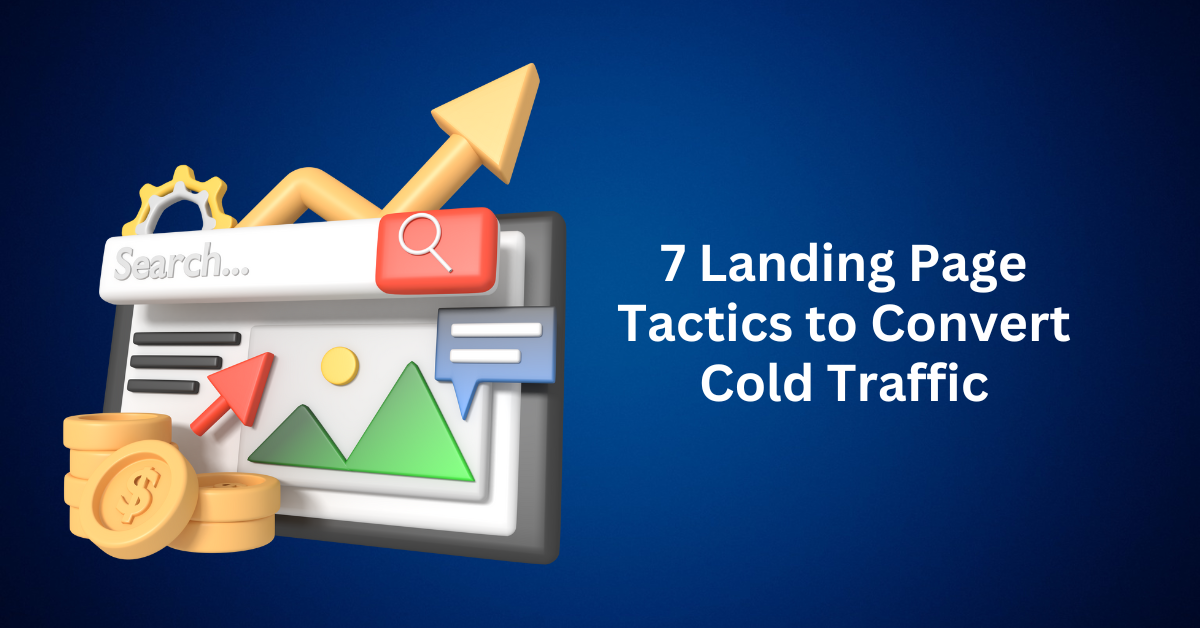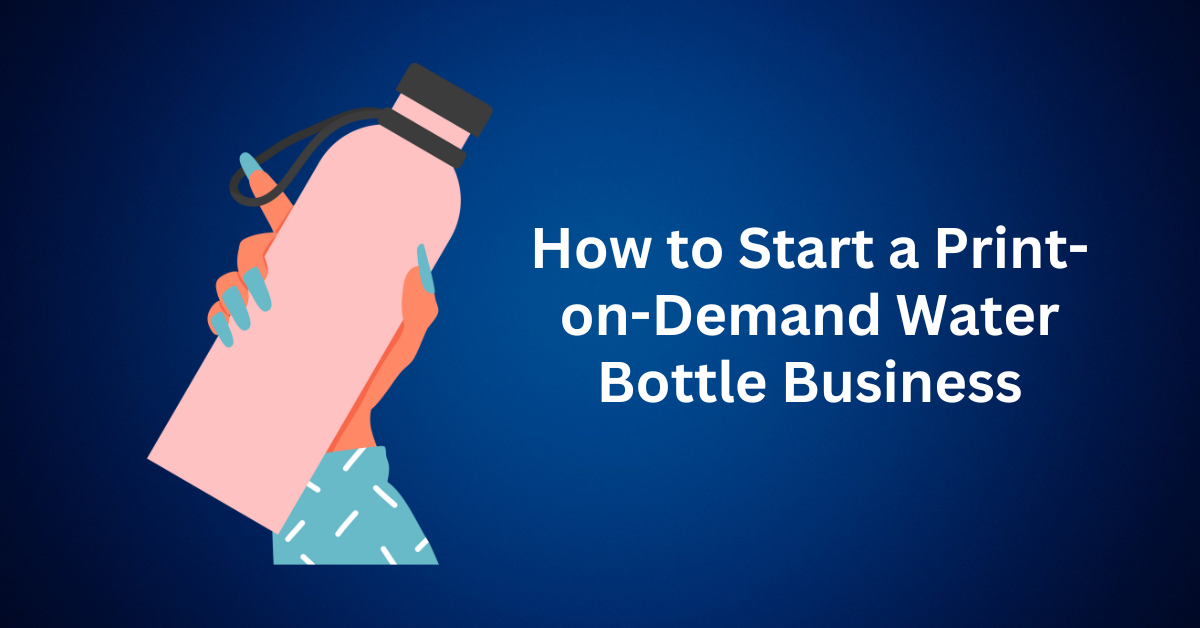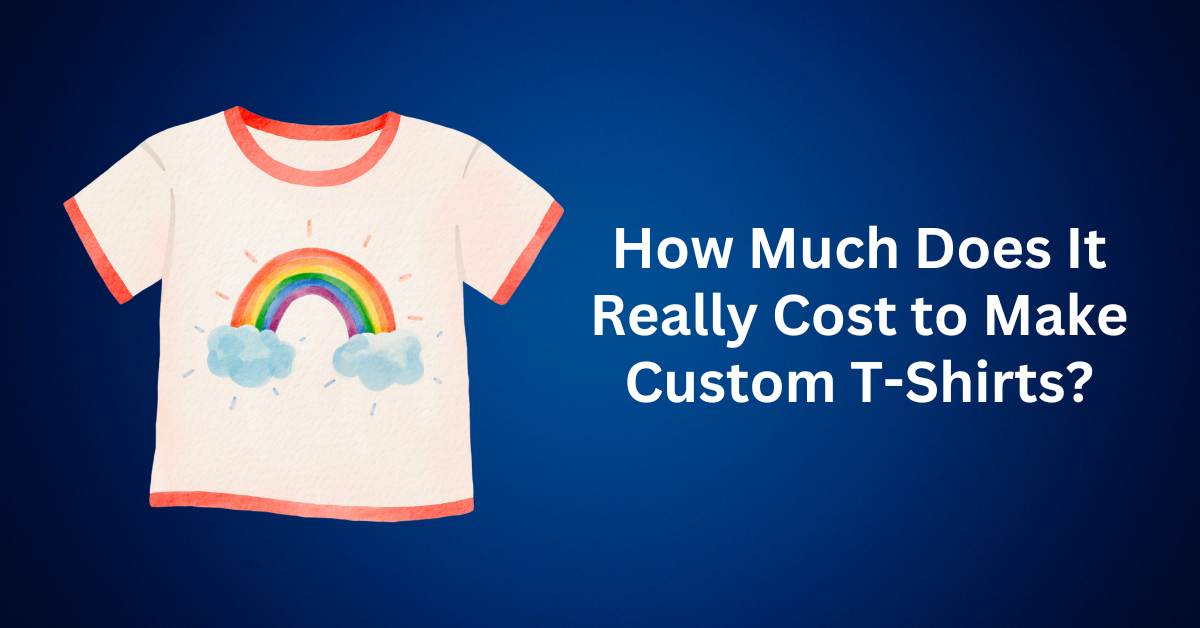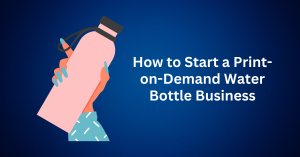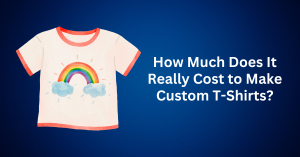Are you getting cold traffic visitors to your landing page but struggling to convert them? You’re not alone. Many business owners and marketers invest time and money in driving traffic, only to watch potential customers bounce without taking action.
Despite testing new headlines, updating colour schemes, and rewriting your copy, conversions may still fall flat. Why? Because most landing pages aren’t designed to guide cold leads toward a buying decision, they’re simply digital billboards.
But here’s the good news: with a few smart adjustments, your landing page can become more than just a pretty destination. It can transform into a high-performing sales funnel that nurtures, engages, and converts.

Table of Contents
ToggleWhy Use a Landing Page for Cold Traffic?
When you’re sending cold traffic, people who don’t know you, your brand, or your offer, straight to your website homepage, you’re asking them to figure everything out on their own.
And in the attention economy, that’s a big mistake.
Here’s why a landing page is essential for converting cold visitors:
1. It Focuses Their Attention on One Action
Unlike a homepage that offers multiple links, menus, and distractions, a landing page has one clear goal: get the visitor to take a specific action (opt in, register, book a call, etc.).
That’s crucial when you’re dealing with people who have never heard of you before. Cold traffic needs guidance, not choices.
2. It Warms Up Visitors with the Right Message
Cold leads don’t trust you yet, and they won’t convert unless they clearly understand how you solve their specific problem. That’s where a landing page comes in.
A well-crafted landing page allows you to speak directly to their pain points, showing that you understand what they’re going through. You can also offer a simple, fast win, such as a free guide or checklist, which provides immediate value with minimal commitment.
By doing this, you begin building trust through relevance and usefulness. This is the first step in moving someone from thinking, “Who are you?” to saying, “Tell me more.”
3. It Collects Leads for Future Follow-Up
Most cold traffic won’t purchase on their first visit, but that doesn’t mean the opportunity is lost. Just because they leave without buying doesn’t mean they’re gone forever.
A landing page with an opt-in form gives you a second chance. It allows you to capture their email address or phone number so you can stay in touch. With this contact information, you can nurture the relationship through automated emails or messages that continue to deliver value.
Over time, this ongoing communication builds trust and keeps you top of mind until they’re ready to make a purchase. This is where the magic of funnels comes in. Instead of losing traffic, you build a pipeline of future customers.
4. It Makes Testing and Optimization Easy
With a dedicated landing page, you not only gain full control over how visitors interact with your offer but also over how you track their behavior. More importantly, it allows you to monitor specific metrics such as click-through rates, opt-ins, and bounce rates, providing clear insights into what’s working and what isn’t.
In addition, a landing page lets you run A/B tests on key elements like headlines, call-to-action buttons, and page layouts. As a result, you can experiment freely, gather valuable data, and continuously refine your page for better performance.
By contrast, achieving this level of precision is far more difficult on a cluttered homepage, where multiple distractions and competing goals dilute the user’s focus.
5. It’s Built for Speed and Mobile Conversion
Landing pages load faster, adapt to mobile screens better, and create a more focused experience, especially for users clicking from social ads or search engines.
Since cold traffic is often coming from platforms like Facebook, Instagram, Pinterest, or Google Ads, first impressions matter, and a well-optimised landing page delivers a smooth, conversion-friendly experience.
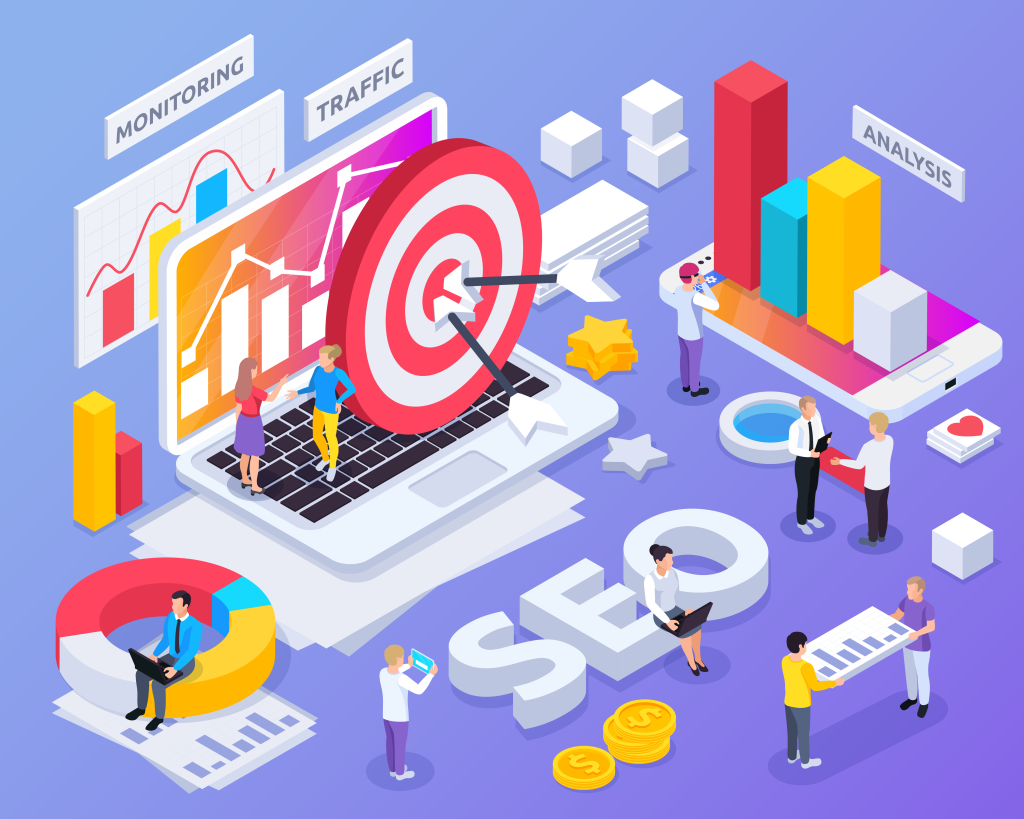
7 Proven Strategies to Convert Cold Traffic
Below, we’ll explore seven powerful and actionable strategies to help you build a landing page that not only grabs attention but also drives real results.
1. Hook Cold Traffic Visitors Instantly with a Magnetic Headline
When someone lands on your page, you have just a few seconds to make an impression. If your headline isn’t clear, specific, and emotionally relevant, you’ll lose them before you even start.
To create a high-converting landing page, your headline must speak directly to your audience’s pain points or goals. Skip the generic phrases like “Download Our Free Guide.” Instead, use attention-grabbing, benefit-focused copy like:
“Steal the 7-Step Checklist That Grew Our Email List by 327% in One Month.”
This kind of headline works because it:
- Promises a clear outcome
- Creates curiosity
- Offers value upfront
2. Simplify Your Landing Page Layout for Maximum Cold Traffic Conversions
When it comes to landing page design for lead generation, simplicity sells. A cluttered layout overwhelms users and dilutes your message. Your goal should be to guide the visitor’s attention naturally from headline to CTA, without distractions.
Here’s how to create a focused and user-friendly experience:
- Use a single, clear call-to-action (CTA): Avoid giving people too many choices. Stick to one button with action-oriented copy like “Get My Free Guide” or “Start My Free Trial.”
- Keep your copy short and conversational: Write as if you’re texting a friend. Be friendly, helpful, and to the point.
- Leverage white space: Give your content room to breathe. Clean layouts enhance readability and make your CTA stand out.
- Design mobile-first: A large percentage of traffic comes from smartphones. Make sure your page loads fast, buttons are tappable, and the layout adapts perfectly to smaller screens.
3. Establish Credibility Instantly Using Social Proof
Nothing builds trust faster than seeing that other people have already gotten results from your offer. When cold leads land on your page, they’re asking: “Why should I trust this?” Social proof answers that question.
Here are powerful forms of social proof that boost landing page conversions:
- Client testimonials with specific results or praise
- Screenshots of messages or feedback from real users
- Ratings and review counts, especially for products or tools
- Milestone stats like “Over 5,000 downloads” or “Trusted by 10,000+ entrepreneurs”
But what if you’re just starting and don’t have testimonials yet?
No problem. Instead, borrow authority from your background:
- Share personal results or case studies
- Highlight any certifications, partnerships, or credentials
- Include media mentions or guest appearances if available
4. Strengthen Your Call to Action (CTA) with Personality and Precision
Your call-to-action (CTA) is the tipping point. The moment when a visitor decides whether to engage or exit. It’s not just a button. It’s a final nudge that can make or break your conversion rate.
To boost response, ditch the dull “Submit” or “Click Here” buttons. Instead, craft CTA copy that feels personal and outcome-driven.
Examples that work:
- “Send Me the Free Checklist”
- “Yes, I Want to Grow My List”
- “Show Me How This Works”
These phrases use casual language, speak directly to the visitor, and highlight what they’ll gain, creating a sense of momentum.
Placement Strategy:
- Place your first CTA near the top of the page for action-takers who don’t need convincing.
- Add a second CTA after your value proposition or testimonials for those who need more details before they act.
And while it’s tempting to use countdowns or “limited time” offers to push urgency, only do it when it’s genuine. False scarcity backfires, damaging your credibility and trust, especially with colder audiences.
5. Use Funnel Storytelling to Guide Cold Traffic Visitors Toward Action
Want to capture and hold attention like top funnel experts do? Don’t just sell. Instead, tell a story.
Instead of starting with a product or feature, begin by identifying a relatable problem your visitor is facing. This immediately signals, “I get you,” and hooks the reader emotionally.
Here’s a simple framework funnel pros use:
- Describe the pain point in vivid, specific terms
(e.g., “You’ve been posting daily on social media but getting zero engagement…”) - Introduce your personal ‘aha’ moment or system
(“That’s exactly why I created this framework to help people like you skip the struggle.”) - Offer a focused solution that promises one clear win
Avoid overwhelming visitors with too many features or claims. Narrow it down to one benefit that solves a key frustration.
This technique transforms your landing page from a pitch into a journey with a relatable guide. You. And people don’t mind following a guide. They’re more likely to trust and convert when they feel seen and understood.
6. Track the Right Metrics to Measure Landing Page Performance
Your first landing page won’t be perfect, and that’s completely normal. What separates average marketers from high-converting pros is the ability to learn from the data and make smart, strategic improvements.
Instead of guessing, focus on tracking key landing page metrics that give you insight into what’s working and what needs fixing.
Here are the essential metrics to monitor:
- Conversion Rate: To start with, this is the percentage of visitors who take the desired action—whether that’s opting in, booking a call, or making a purchase. Since it reflects your funnel’s effectiveness, this should be considered your primary success metric.
- Bounce Rate: In contrast, bounce rate shows how many people visit your page and leave without interacting. Because of this, a high bounce rate can signal poor targeting, slow load times, or a weak first impression.
- Scroll Depth: Furthermore, scroll depth indicates how far down the page your visitors are scrolling. If, for example, most people never reach your CTA, it may suggest that your headline or early copy is losing their attention.
- CTA Clicks: Finally, CTA clicks track which buttons are getting clicked and where they’re located. By analyzing this, you can identify whether your CTA placement, wording, or timing is truly effective.
7. Run A/B Tests and Keep Optimizing for Higher Cold Traffic Conversions
Even a great landing page can always get better. The fastest way to do that? A/B testing. The process of comparing two versions of a page element to see which one performs better.
But here’s the key: don’t change everything at once. Test one element at a time to isolate what’s making a difference.
What to A/B test:
- Headlines and subheadlines
- CTA button text, size, or colour
- Hero image vs. video
- Short-form vs. long-form layout
- Placement of testimonials or opt-in forms
Best Practices:
- Let the test run long enough. Aim for at least 100 conversions or 7 full days of traffic before making a decision.
- Test the “ugly” version too. Sometimes, a plain, minimal layout can beat a polished design.
- Test on consistent days. Audience behaviour can vary depending on the day of the week. For example, Friday traffic might not behave like Tuesday traffic.
Why Most Landing Pages Struggle to Convert Cold Traffic (and What to Fix)
You’ve invested time in designing your landing page. Clean layout, modern fonts, maybe even a slick explainer video. But if it’s not converting visitors into leads or sales, good looks aren’t enough.
Design alone doesn’t drive results. Clarity, strategy, and structure do.
Here are some of the most common reasons why your landing page might be falling flat and how to fix them before you lose more traffic:
1. Vague or Generic Messaging
If your headline could apply to almost any business, think “Innovative Solutions for Growth” or “Unlock Your Potential”. You’re missing the mark.
Visitors should immediately understand what you offer, who it’s intended for, and why it matters — all within just a few seconds. After all, specificity leads to better conversions, and clarity is what builds trust right from the start.
Quick Fix: To achieve this, consider rewriting your headline to emphasize a clear benefit or outcome. For example, “The 5-Step Framework Freelancers Use to Close High-Paying Clients” highlights both the target audience and the desired result, making it instantly compelling.
2. Visual and Content Clutter
A landing page should have one clear purpose—to guide users toward a single action. However, when you include multiple CTAs, distracting sidebars, long-winded paragraphs, or intrusive pop-ups, you unintentionally create cognitive overload.
And when visitors feel overwhelmed or confused, they rarely convert. Instead, they bounce.
Quick Fix: To improve clarity and focus, opt for a minimal layout. Stick to one goal, one CTA, and use bite-sized content that flows smoothly from top to bottom.
3. Ineffective Calls-to-Action
Buttons that say “Submit” or “Click Here” do nothing to inspire confidence or curiosity. Your CTA is the final nudge. Make it specific and benefit-driven.
Quick Fix: Use CTA copy that reflects what the user will receive.
Try: “Send Me the Free Workbook” or “Yes, I Want the Free Trial”
4. No Social Proof
In today’s digital landscape, where scams and overhyped promises are everywhere, credibility is everything. Without it, new visitors have little reason to believe in your offer—let alone take action. That’s why trust signals such as testimonials, star ratings, and recognizable brand logos are essential for building confidence and encouraging conversions.
Quick Fix: To build trust instantly, incorporate a few authentic testimonials, screenshots of real results, or compelling user stats such as “Used by over 10,000 marketers.” Even small proof points can make a big difference.
5. Slow Load Times
According to Google, pages that take more than 3 seconds to load lose over 50% of mobile users. Speed directly impacts conversions and search rankings.
Quick Fix: Compress images, remove unnecessary scripts, and test your page with tools like Google PageSpeed Insights or GTmetrix.
Final Thoughts: These 7 Landing Page Tactics Work for Cold Traffic
Reading about strategy is valuable; however, real results come from taking action. If your current landing page isn’t converting the way you want, then instead of simply bookmarking this article and walking away, make it a priority to choose one proven tactic from the list and implement it this week.
To get started, focus on your headline. Since it’s the very first thing visitors see, it often determines whether they stay or bounce. Next, work your way down the page. Along the way, evaluate your calls-to-action, the visual flow of your content, and, most importantly, trust-building elements such as testimonials, reviews, or guarantees.
Focus on making one key improvement at a time. You don’t need a complete overhaul. Instead, make small, intentional tweaks that better guide users toward taking the desired action.
Modern funnel-building tools like ClickFunnels, Systeme.io, or GetResponse make it easy to test these changes—no coding or design experience required.
Track your progress, celebrate the small wins, and continue refining. This is how you turn an ordinary landing page into a high-performing, lead-generating sales funnel that works for you around the clock.

